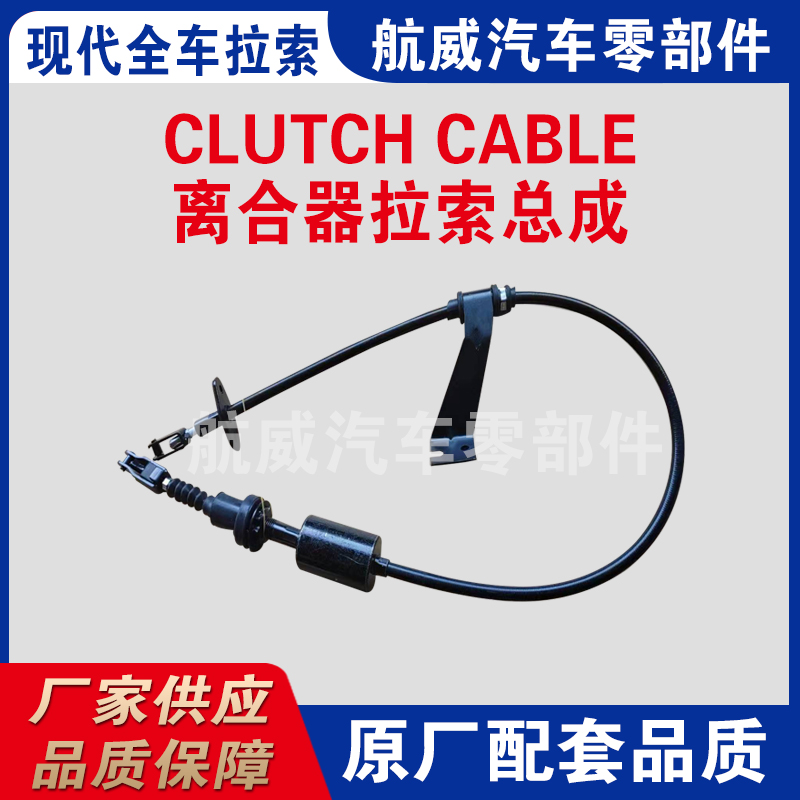rear handbrake cable
Understanding the Rear Handbrake Cable Importance and Maintenance
The rear handbrake, also known as the emergency brake, is an essential component of any vehicle’s braking system. One critical element that ensures the proper functioning of this system is the rear handbrake cable. This article will explore the role of the rear handbrake cable, common issues that may arise, and the importance of regular maintenance.
What is the Rear Handbrake Cable?
The rear handbrake cable is a flexible cable that connects the handbrake lever inside the vehicle to the rear brakes. When the driver pulls the handbrake lever, the cable transmits that force to the brake mechanism at the rear wheels, engaging the brake pads and securing the vehicle in place. This is particularly useful when parking on a slope or when needing to halt the vehicle temporarily without relying solely on the foot brake.
Importance of the Rear Handbrake Cable
The reliability of the handbrake system relies heavily on the functionality of the rear handbrake cable. A well-maintained cable ensures that the handbrake engages and disengages smoothly, providing drivers with the confidence that their vehicle will remain stationary when needed. Additionally, in emergency situations where the primary braking system fails, the handbrake acts as a critical backup, potentially preventing accidents.
Common Issues with the Rear Handbrake Cable
Over time, the rear handbrake cable may suffer from several issues that can hinder its performance. One common problem is cable stretch, which can occur due to regular wear and tear. As the cable stretches, it may not engage the brakes fully, leading to a compromised handbrake performance. Other issues may include fraying or corrosion, which can weaken the cable and potentially cause it to snap.
Additionally, the cable may become stuck due to rust or dirt accumulation in the cable housing, preventing it from sliding freely. This can lead to an inability to release the handbrake entirely, causing inconvenience and potentially damaging the brake system.
rear handbrake cable

Maintenance Tips for the Rear Handbrake Cable
Regular maintenance of the rear handbrake cable is vital to ensure its longevity and functionality. Here are some tips to keep in mind
1. Regular Inspections Periodically inspect the cable for any signs of wear, fraying, or corrosion. Look for rust on the cable housing and ensure that it is free of debris.
2. Lubrication Apply a suitable lubricant to the cable and its housing to ensure smooth operation. This can help prevent rust and assist in keeping the cable from sticking.
3. Adjustments If you notice that the handbrake does not engage fully, adjustments may be necessary. This can typically be done at the rear brakes or the handbrake lever, depending on the vehicle model.
4. Professional Assistance If you encounter any significant issues or if the handbrake cable has snapped, it is advisable to seek professional assistance. Mechanics can provide a thorough inspection and ensure proper repairs or replacements.
Conclusion
The rear handbrake cable plays a vital role in a vehicle's safety and overall functionality. Understanding its role, recognizing potential issues, and performing regular maintenance can ensure that the handbrake system operates effectively. By giving attention to this important component, drivers can enhance their safety on the road while mitigating the risks associated with brake failure. Remember, a well-functioning handbrake is a key aspect of responsible vehicle ownership.
-
Workings of Clutch Pipe and Hose SystemsNewsJun.04,2025
-
The Inner Workings of Hand Brake Cable SystemsNewsJun.04,2025
-
The Secrets of Throttle and Accelerator CablesNewsJun.04,2025
-
The Hidden Lifeline of Your Transmission Gear Shift CablesNewsJun.04,2025
-
Demystifying Gear Cables and Shift LinkagesNewsJun.04,2025
-
Decoding Clutch Line Systems A Comprehensive GuideNewsJun.04,2025
